For developers, the terminal isn’t just a tool; it’s a magical portal to a world where code comes to life. Imagine diving into a realm where every keystroke unleashes the power of your creativity. Whether it’s debugging a pesky bug or deploying the next big app, the terminal is the unsung hero of the coding universe.
Table of Contents
ToggleOverview of Terminal for Developers
The terminal serves as a command-line interface that allows developers to interact directly with the operating system. Utilization of this tool can enhance productivity and streamline workflows. Various commands offer functionality, like file manipulation, process management, and system monitoring.
Developers rely on the terminal for debugging applications and testing code more efficiently. Its flexibility enables quick execution of scripts, making it easier to automate repetitive tasks. In many instances, terminal use leads to faster application deployment, reducing development time significantly.
Additionally, the terminal can accommodate various programming languages and environments. Support for version control systems, like Git, allows for seamless collaboration among developers. Customization options within terminal settings enable users to tailor their environments according to personal preferences.
An essential aspect of the terminal’s utility lies in scripting capabilities. Scripting automates processes and improves reproducibility across tasks. Using tools like Bash or PowerShell, developers can create scripts that save time and minimize human errors.
Command-line proficiency also facilitates software installation and management. Package managers such as npm or pip simplify dependency management, ensuring that projects run smoothly. Furthermore, terminal access to remote servers enhances developers’ ability to manage applications from various locations.
By leveraging the terminal, developers can embrace a more efficient coding workflow. The numerous features it offers promote a deeper understanding of the systems they’re working with. Knowledge of terminal commands serves as a foundational skill for developers seeking to enhance their technical abilities.
Key Features of Terminal for Developers
The terminal offers several essential features that enhance the development experience. These include a command line interface, scripting and automation capabilities, and numerous customization options.
Command Line Interface
A command line interface allows developers to execute commands directly with precision. It provides a text-based environment that fosters efficient communication with the operating system. This environment leads to quicker navigation between directories, file manipulation, and process management. Additionally, many commands support various flags and options, offering functionality tailored to specific tasks. For instance, the ls command can list files with detailed information when used with the -l flag, streamlining the workflow significantly.
Scripting and Automation
Scripting and automation features boost developer productivity by allowing the execution of repetitive tasks quickly. Shell scripts enable the customization of command sequences for consistent execution. Developers can create scripts to automate processes such as backups or software installations, reducing manual effort. Utilizing tools like cron, scripts can even run at specified intervals, ensuring tasks occur automatically without intervention. This automation frees up time for more complex coding challenges.
Customization Options
Customization options in the terminal empower developers to tailor their environments according to personal preferences and workflows. From color schemes to prompt configurations, changes make the terminal experience more visually appealing and user-friendly. Developers can modify settings like keyboard shortcuts and command aliases to streamline their most frequently performed actions. This flexibility not only enhances ease of use but also fosters a sense of ownership over the development environment.
Popular Terminal Applications
Various terminal applications cater to different operating systems, enhancing development workflows. Each offers unique features suited for developers.
Terminal on macOS
Terminal on macOS provides a powerful command-line interface. Users access it via the Applications folder or Spotlight, launching a session for command execution. The integration with bash or zsh allows developers to run scripts seamlessly. Numerous built-in commands streamline tasks like file manipulation or system monitoring. Customization options, including themes and profiles, enhance usability and visual appeal. Terminal also supports SSH for secure remote server access, empowering developers to manage applications remotely.
Terminal on Windows
Windows Terminal introduces a modern command-line interface for Windows users. It supports multiple tabs, enabling developers to run various command-line shells simultaneously. Notably, it accommodates PowerShell, Command Prompt, and WSL. Profiles allow users to customize fonts, colors, and backgrounds, personalizing their experience. The application enhances productivity through features like split panes, enabling side-by-side operations. Developers can also utilize Windows Package Manager to install software directly from the terminal.
Linux Terminal Options
Linux offers a variety of terminal emulators, each with distinct features. GNOME Terminal serves as the default for many distributions, supporting multiple tabs and profiles. Konsole, found in KDE environments, provides advanced functionalities like split views and customizable shortcuts. Terminator enables developers to arrange terminals in a grid, enhancing multitasking efficiency. Additionally, users can access the shell with minimal resource consumption using lightweight options like LXTerminal. Flexibility is a hallmark of Linux, allowing developers to choose a terminal that fits their workflow best.
Best Practices for Using Terminal
Using the terminal efficiently enhances productivity for developers. Adopting best practices can transform how they navigate their coding environments.
Keyboard Shortcuts
Keyboard shortcuts significantly speed up terminal operations. Utilizing Ctrl+C to terminate commands and Ctrl+L to clear the screen make interactions smoother. Developers can access previous commands with the Up Arrow key, enhancing command retrieval. The Tab key provides autocomplete functionality, reducing typing errors. Familiarizing oneself with these shortcuts can vastly improve workflow efficiency.
Workflow Optimization
Optimizing workflows in the terminal involves adopting specific strategies. Organizing commands into scripts automates repetitive tasks, saving valuable time. Implementing aliases for commonly used commands minimizes typing and reduces errors. Developers often utilize tools like tmux for session management, allowing them to run multiple terminal sessions simultaneously. Regularly integrating version control commands into their process can streamline development and collaboration. Prioritizing organization and automation leads to more effective coding practices.
Conclusion
The terminal stands as an indispensable asset for developers, enhancing their productivity and creativity. Its command-line interface and automation capabilities streamline workflows and simplify complex tasks. By mastering the terminal, developers can not only improve their coding efficiency but also deepen their understanding of the systems they interact with.
With diverse applications available across various operating systems, the terminal adapts to meet different needs and preferences. Embracing best practices and customization options further empowers developers to create a tailored environment that suits their workflow. Ultimately, the terminal is more than just a tool; it’s a gateway to unlocking greater potential in the development process.








